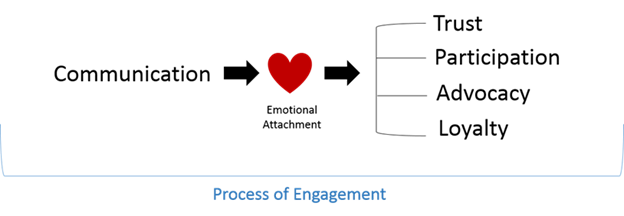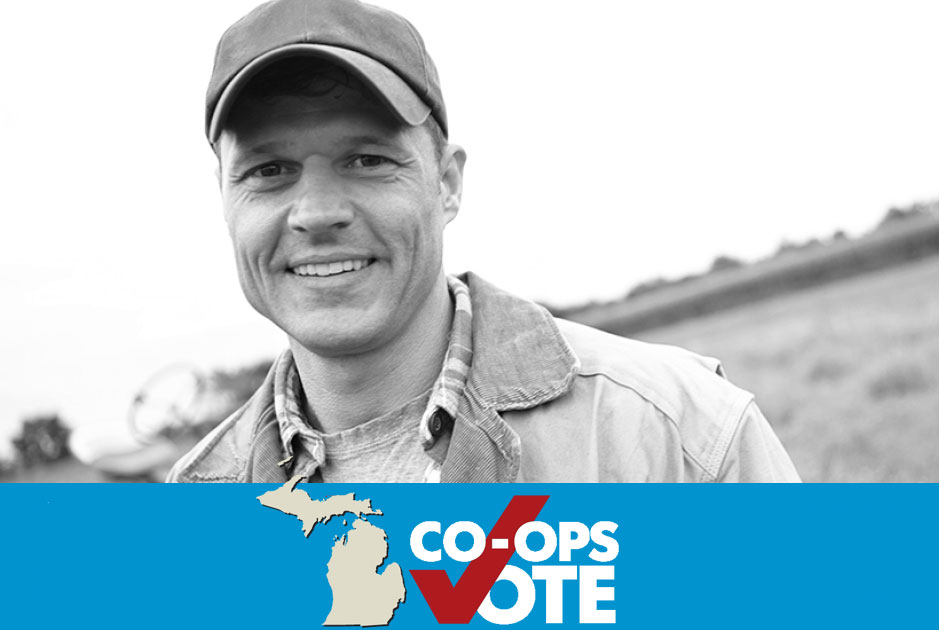Betcha dinner that your electric cooperative is committed to increasing member engagement and loyalty.
As you should be.
According to NRECA’s 21st Century document “positive engagement leads to member loyalty- which will result in the sustainability of the electric cooperative model.”
But let’s be real.
While co-ops may be committed to building member engagement and loyalty, historically they had no way to measure their success.
For over 75 years, co-ops have relied too much on anecdotal evidence to gauge member engagement and loyalty (i.e. the man at the coffee shop said he loves our co-op; people at the annual meeting said they had a great time). In the meantime, we’ve developed sophisticated ways to measure member satisfaction. But, as you all know, satisfaction is not the same as loyalty.
It’s time we get serious about measuring loyalty. The future of our co-ops very well might depend on it. That’s why, last year we (Casey and Rachel) set out on a quest to develop a metric for member engagement and loyalty.
The Quest
As electric co-op communicators we knew (and not to mention our bosses told us!) that increasing member engagement and loyalty was our responsibility. We just didn’t have a way to know if we were accomplishing that goal.
So we buried ourselves in academic literature, enlisted the help of a fantastic statistician, Sam Buttigieg, and set out to develop a metric.
The Discovery
First, we had to find out exactly what it was we were trying to measure. And if we’re honest, terms like engagement and loyalty aren’t exactly crystal clear.
We sorted through a lot of academic research in our search to define that critical link that determines whether a co-op’s engagement efforts are creating member loyalty.
Here’s what we found.
Emotional attachment is the key to measuring engagement and loyalty in a statistically significant, quantifiable way.
It looks a little like this:

Our research revealed that emotional attachment is the key to increasing member trust, participation, advocacy and loyalty. And, effective engagement builds emotional attachment. And, emotional attachment is measurable!
The Metric
We developed an index (consisting of four questions) to measure emotional attachment and conducted a pilot at Cherryland Electric Cooperative. As a survey instrument, the index has a reliability of .9, which is considered excellent and publication worthy in the world of academia.
We now have a statistically significant and reliable way to measure member loyalty and engagement!
Finally.
The survey instrument has been lovingly coined the Member Loyalty Index (MLI).
What About My Co-op?
At this point, you’re probably thinking… how do I get this super awesome, fantastic metric to measure member engagement and loyalty at my co-op?
We’re glad you asked. NRECA Market Research Services liked our research so much they decided to make the metric available to their clients. They’ve done a few surveys with the Member Loyalty Index already and are finding it is a better predictor of advocacy than previous metrics, including the ACSI. Or if you’re a bit more of a rogue (and we can’t fault you for that), you can simply add the MLI questions to the next survey you administer. Feel free to download them below.
Beyond the Metric
The best part about having an MLI score is that it makes putting together a strategic communications plan a breeze. For example Cherryland scored 80 on a 100-point scale, and set a 2016 MLI goal of 90. We used Cherryland’s survey data along with their Member Loyalty Index (MLI) score to create an impact map. The impact map told us exactly where efforts should be focused to improve Cherryland’s MLI score.
With limited time, budget and resources, that’s pretty important information to have.

Based on this information, Cherryland is focused on outage communications and a value marketing campaign. Don’t be surprised if you see a blog or two about those efforts along the way. And be sure to let us know in the comments below what you’re doing to increase member loyalty at your co-op!














Thanks for the nifty info! Do you have any suggestions on survey frequency?
Good Question, Chris.
Annually is ideal- but we know it’s not always realistic (time, budgets, etc). Mike Sassman from NRECA Market Research confirmed it’s ok to stretch it to every 2-3 years if necessary.